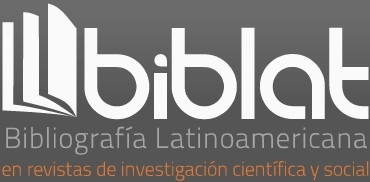Subjectivity, subjectality and subjectivation: how to become a subject
DOI:
https://doi.org/10.35494/topsem.2019.1.41.596Keywords:
regimes of subjectivity, expressivity, enunciative subject,Abstract
The theoretical and methodological frame of this paper is given
by greimassian and post-greimassian semiotics linked to linguistics.
At the cross-roads of these disciplines, enunciative semiotics
enables us to examine further the notions of subjectivity, subjectality
and subjectivation, as they enter into the definition of
the subject of enunciation. These notions are closely interrelated.
More precisely, we approach these notions from three points
of view. First, we focus on the marks, traces and prints in a text in order to examine further the notion of expressivity,
which is related to one of the regimes of subjectivity:
the “subjective” subjectivity, which characterizes the subject of
enunciation. Secondly, we turn our attention to the origins of the
subject of enunciation and we identify two more regimes of
subjectivity: the “participant” subjectivity, which is related to a
sensitive body (corps-actant) and its sensori-motricity, and the
“subjectal” subjectivity, which is linked to perception. Thirdly,
we want to show how the “subjective” subjectivity and the subject
of enunciation take shape in a text not only through marks,
traces and prints, but even more so through the organizational
forms called genre, style, idiolect or texture.
Thus the subject of enunciation may be defined as the convergence
point of three regimes of subjectivity, which characterize
the development of the subject (subjectivation). The different
levels corresponding to the “participant”, the “subjectal” and the
“subjective” regimes of subjectivity define an enunciative path.
Downloads
References
ANGERMULLER, Johannes (2013). Analyse du discours poststructuraliste. Les voix du sujet dans le langage chez Lacan, Althusser, Foucault, Derrida, Sollers. Limoges : Lambert-Lucas.
BALIBAR, Étienne (2005). « Le structuralisme : une destitution du sujet ». Revue de
métaphysique et de morale, vol. 1, núm. 45, pp. 5-22.
BALLY, Charles (1905). Précis de stylistique. Esquisse d’une méthode fondée sur l’étude du français moderne. Ginebra : Eggimann.
___________ (1909). Traité de stylistique française. Heidelberg/París : Winter et
Klincksieck.
BENVENISTE, Émile (1966). Problèmes de linguistique générale. París : Gallimard [Versión en español: Problemas de lingüística general, vol. 1, México, Siglo XXI, 2001].
BERTRAND, Denis (2005). « Deixis et opérations énonciatives ». En D. Monticelli, R.
Pajusalu, A. Treikelder (éds). De l’énoncé à l’énonciation et vice versa. Regards
multidisciplinaires sur la deixis. Studia Romanica Tartuensia, IV. Tartu : University Press, pp. 171-185.
BORDRON, Jean-François (2011). L’iconicité et ses images. París: PUF.
COLAS-BLAISE, Marion (2012). « Forme de vie et formes de vie. Vers une sémiotique des cultures ». Nouveaux Actes Sémiotiques, núm. 115. Disponible en: http://epublications.unilim.fr/revues/as/2631
COMBE, Dominique (2006). Situation de Charles Bally. Linguistique, philosophie,
psychologie, sociologie, anthropologie. Dans J.-L. Chiss (éd.). Charles Bally (1865-1947). Historicité des débats Linguistiques et didactiques. Stylistique, énonciation, crise du français. Lovaina/París : Peeters.
COQUET, Jean-Claude (2007). Logos et Phusis. Une phénoménologie du langage. París : Presses Universitaires de Vincennes.
___________ (2016). « À propos de l’écriture dans la phénoménologie du
langage : Benveniste, Merleau-Ponty et quelques autres ». En I. Fenoglio,
J.-C. Coquet, J. Kristeva, C. Malamoud, P. Quignard (éds). Autour d’Émile Benveniste. París : Seuil, pp. 59-96.
CRAGG, Tony (2004). Sans titre. Luxemburgo: Mudam.
DELEUZE, Gilles y GUATTARI, Félix (1997). Mil mesetas. Capitalismo y esquizofrenia. Pre-Textos. Traducción de José Vázquez Pérez con la colaboración de Umbelina Larraceleta. Valencia: Pre-Textos.
DÉTRIE, Catherine, SIBLOT, Paul & VERINE, Bertrand (2001). Termes et concepts pour l’analyse du discours : une approche praxématique. París : Champion.
DOSSE, François (1991). « Le sujet captif : entre existentialisme et structuralisme ».
L’homme et la société, vol. 101, núm. 3, pp. 17-39.
DUCROT, Oswald & TODOROV, Tzvetan (1972). Dictionnaire des sciences du langage. París : Seuil.
ECO, Umberto (1978). « Pour une reformulation du concept de signe iconique ».
Communications, núm. 29, pp. 141-191.
FONTANILLE, Jacques (2003). « Énonciation et modélisation ». Modèles linguistiques. t. XXIV, fasc. 1, pp. 109-133.
___________ (2014). « L’énonciation pratique : exploration, schématisation et transposition ». Colloque Common’14. Lieja, 24-26 septembre 2014. Université de Limoges/Institut Universitaire de France. Disponible en: http://www.lucid.ulg.ac.be/conferences/common14/
downloads/Expose%20Jacques%20Fontanille.pdf
___________ (2015). Formas de vida. Lima: Universidad de Lima/Fondo Editorial.
___________ (2017). Cuerpo y sentido. Lima: Universidad de Lima/Fondo Editorial.
___________ y ZILBERBERG, Claude (2004). Tensión y significación. Lima: Universidad de Lima/Fondo Editorial.
GRACQ, Julien (1977). André Breton. París : José Corti.
GROUPE μ (2015). Principia semiotica. Aux sources du sens. Bruselas: Les Impressions Nouvelles.
GUILLAUME, Gustave ([1929] 1970). Temps et Verbe. París : Honoré Champion.
INGOLD, Tim (2013). Une brève histoire des lignes. Bruselas : Zones Sensibles.
KERBRAT-ORECCHIONI, Catherine (1999). L’énonciation. De la subjectivité dans le langage. París : Armand Colin.
KRISTENSEN, Stefan (2010). Parole et subjectivité. Merleau-Ponty et la phénoménologie de l’expression. ldesheim/Zurich/Nueva York: Georg Olms Verlag.
LEGALLOIS, Dominique & FRANÇOIS, Jacques [s/f].
« Définition et illustration de la notion d’expressivité en linguistique ». Disponible en: www.crisco.unicaen.fr
LYOTARD, Jean-François (1988). L’Inhumain. Causeries sur le temps. París : Galilée.
MERLEAU-PONTY, Maurice (1945). Phénoménologie de la perception. París : Gallimard.
MICHAUX, Henri (1999). Par des traits. Fontfroide le haut : Fata Morgana. Mudam. Guía de la exposición Tony Cragg (11.02.2017-03.09.2017). Luxemburgo. Disponible en: https://www.mudam.lu/en/expositions/details/exposition/tony-cragg-1/
ONO, Aya (2007). La notion d’énonciation chez Émile Benveniste. Traducción de Desiderio Blanco. Limoges : Lambert-Lucas.
ZILBERBERG, Claude (2016). De las formas de vida a los valores. Lima: Universidad de Lima/Fondo Editorial.
Downloads
Published
How to Cite
Issue
Section
License

Tópicos del Seminario is licensed under a Creative Commons Reconocimiento-NoComercial-CompartirIgual 4.0 Internacional License.














